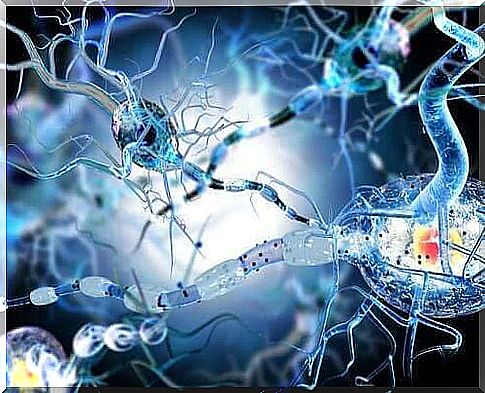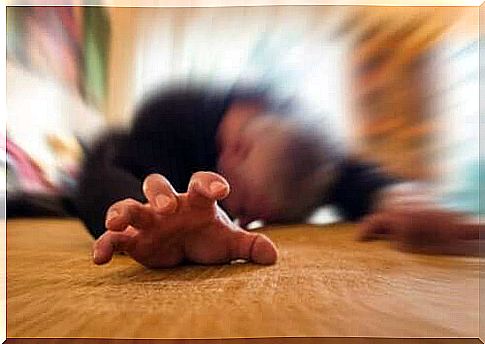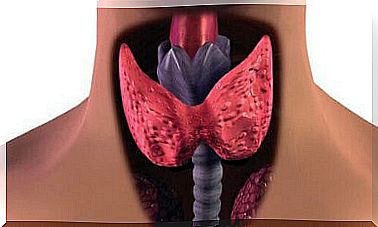What To Do In Case Of An Epileptic Seizure?

Epileptic seizures are paroxysmal changes that occur suddenly and unexpectedly. They usually end quickly. They are due to the unusual activity of nerve cells that appears suddenly, briefly, and temporarily. In this article, we will explain in more detail what an epileptic seizure is, as well as how you can help a loved one in the event of an epileptic seizure.
The most common characteristic of an epileptic seizure is that the seizure begins abruptly and lasts for a few seconds or sometimes even minutes. When a scene is about to begin, one may lose consciousness and make rhythmic, sudden, and involuntary movements. It is also possible that he is aware of everything that happens during the scene.
According to the World Health Organization (WHO), there are approximately 50 million people with epilepsy in the world, and 70% of them could live without epileptic seizures if the disease were properly diagnosed and treated.
Classification of epileptic seizures

Epileptic seizures are divided into two main groups:
- Common: Seizures affect two halves of the brain from beginning to end of an epileptic seizure.
- Localized: Seizures in which bioelectrical activity begins in a specific area of the brain and can then spread to other parts of the brain.
Generalized epileptic seizures
Generalized epileptic seizures are classified into several types by subtype:
- Tonic-clonic: These are the most common of all. They usually start with limb stiffness (tonic phase) and are followed by strong body vibration (clonic phase). During these stages, there may be a bite of the tongue, a sudden fall, and relaxation of the body and loss of bowel control.
- Myoclonic: They are characterized by rapid and short contractions of muscles on both sides of the body. A person may suddenly fall over or lose a grip on objects in their hands. This is often confused with clumsiness alone and thus can take longer to diagnose.
- Generalized atonic seizures: They cause loss of muscle control. They are sudden and usually cause a person to collapse.
- Seizures of Absence: A person suddenly loses consciousness and stops doing the current activity while staring expressionlessly.
Local epileptic seizures
Unambiguous local epileptic seizures are very common. They occur in conjunction with loss of consciousness and symptoms can vary depending on where in the brain the attack begins. Symptoms may include:
- Motor – involuntary movement of the body.
- Gelastic – uncontrollable laughter.
- Sensory – visual and auditory hallucinations and so on.
- Psychic – strange thoughts.
Multi-factorial seizures of local origin also cause loss of consciousness. When they are born, a person may not respond to stimuli or it happens inconsistently.
Sometimes the body makes automatic movements like pulling, swallowing, chewing, hand massaging and so on. When the scene ends, the person remains confused for a few minutes.
There are also seizures known as epileptic seizures of local origin but secondary to generalization. Such an epileptic seizure usually begins in one part of the brain, but it tends to spread to other parts of the brain and become a common seizure.
How can you help a loved one with an epileptic seizure?

We will now tell you how you can help another person in the event of an epileptic seizure. First, it is important that you stay calm. Then you should move aside any objects that can injure that person, such as sharp-edged furniture, vases, scissors, and so on.
If a person has already collapsed to the ground, you should put something soft under your head so that it does not hit the ground. Once you have completed these tasks, we recommend that you lighten the accessories and clothing around your neck, such as a tie, shirt collar, and so on. You can then turn the person who has had an epileptic attack on their side so that they can breathe better.
It is important to be aware of the duration of an epileptic seizure, which varies between 2-3 minutes. You should stay next to the person who had the scene for the duration of the scene and make sure he or she regains consciousness after it ends. It is important to make sure he recovers gradually without pressure, and then let him rest.
Do not try to prevent him from moving or put any object or fingers in his mouth. It is also not necessary to administer artificial respiration. Seizures usually last a few minutes and do not require a visit to the hospital. However, if the scene lasts longer than 5 minutes, you should call the emergency center immediately.









